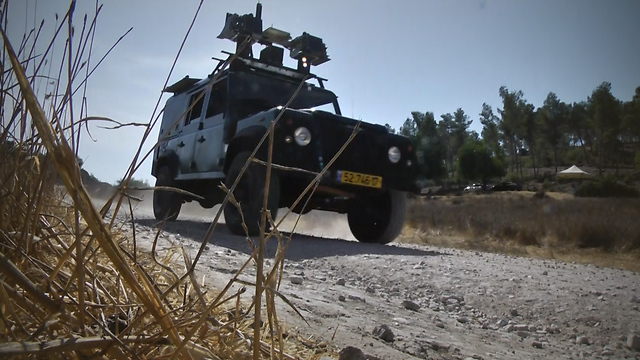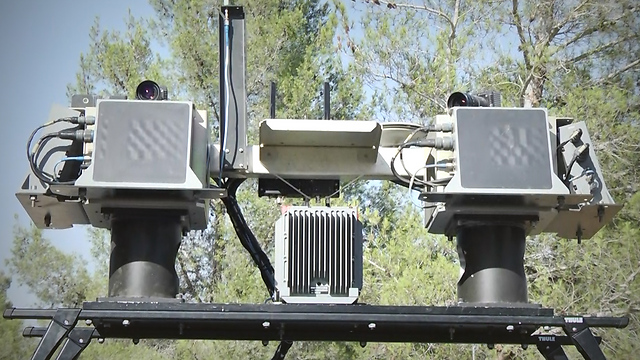Radars with a 270-degree radius and automatic scanning cameras make up new CIMS (Counter IED and Mine Suite) system, developed by Israel Aerospace Industries; system capable of exposing IEDs dozens of meters before military forces endangered by approach.
The Israel Aerospace Industries (IAI) has recently completed the development of the Counter Improvised Explosive Device and Mine Suite (CIMS) mobile system, integrating optic sensors with radars to expose roadside charges before military forces ever go near them.
This new Israeli innovation will be able to protect soldiers against explosive charges as they cross hostile areas in times of battle or operations.
The system is mainly designed to be used by patrol forces undertaking routine security measures near the borders such as route openings and suspicious object inspections. In addition, the system can also assist armored and motorized infantry forces’ land maneuvers.
The new hardware may be installed on a variety of vehicles, from hummers and soft defenders intended for routine patrol tasks, through gunfire-protected vehicles and ending with armored vehicles such as tanks and APCs.

The CIMS suite is comprised of radars capable of 270 degree reception and cameras that are able to automatically scan their surroundings. The combination of these two features allows the system to operate effectively and reliably in all weather conditions, at night and even under cover of fog and dust.

The system—which has yet to be sold to the IDF or any other military—displays its findings on a screen inside the vehicle’s cabin. When it recognizes an IED lurking ahead, it alerts soldiers with both indicators and beeps to stop in their tracks.
At this stage the CIMS suite scans the surrounding area in an attempt to locate further charges and then moves to the third phase of its operation, which involves photographing the identified charges and performing an algorithm-based study of them, categorizing them according to different parameters such as the charge’s weight, type, destructive capacity and more. To achieve this function, the system’s engineers used a technology similar to facial recognition technology already in place in various social networks.

Different weapons systems, such as machine guns, may also be installed onto the system to enable soldiers to shoot at the charges from afar without dismounting from the cover of their vehicle.
Radar systems are already available on the market today which are able to recognize IEDs, but they’re stationary and are usually placed on static masts, thereby severely limiting their area of coverage, especially when it comes to blind spots created by land folds or dunes.

“The system is able to identify concealed or camouflaged charges that may otherwise appear to be rocks or bushes to the naked eye, when in reality they’re extremely powerful explosive devices containing dozens of kilograms of explosives and shrapnel,” the IAI’s Alta company—that developed the system—explained. “CIMS is able to identify charges in open, stony or mountainous terrain.”
In the past few years, even after Operation Protective Edge, there have been several incidents of IEDs being placed by terrorists near Israel’s border with the Gaza Strip and in the Golan Heights. This is a reminder of this longstanding threat, which has already taken the lives of some 2,000 American soldiers in Iraq and Afghanistan in the past decade alone.
As reported by Ynetnews
